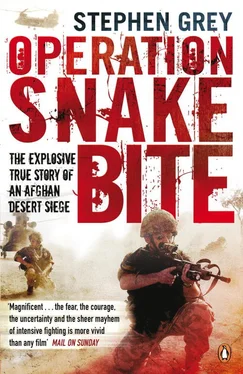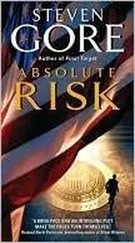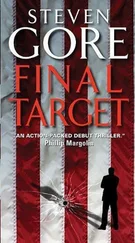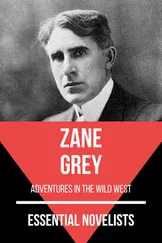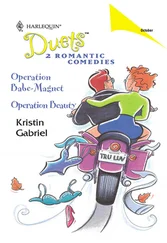Whoever was killed in the attack – in addition to Agha – it was obviously a blow to the Taliban. But the respite earned was just four days. Then the attacks on the Gurkhas started up all over again. Wave after wave of Taliban continued to push forward against the British lines, mostly to meet an ignominious death. ‘The cull continues,’ reported Lieutenant Colonel Ed Smyth-Osbourne, the commander of the Household Cavalry Regiment headquarters that then ran the battle in the south.
18. The Yanks Are Coming!
Brigade headquarters, Lashkar Gah, 25 November
Lieutenant Colonel Brian Mennes, commander of Task Force 1 Fury, looked down on the floor of the tent and studied the British plan marked out on a huge map, and he was not best pleased. In fact, he was horrified. The forty-one-year-old led an elite force of paratroopers who had been fighting in Afghanistan for almost eleven months now. Much of it had been in Helmand. They had launched air assaults up in Kajaki and down in Sangin, and in the green zone north of Gereshk. And he was not going to let his men down now by agreeing to something foolish.
It was Thanksgiving – three days earlier – when his battalion had been driving south, and he had got the call to proceed to Lashkar Gah. His higher command said the Musa Qala op had the green light. It could happen within a week. And his soldiers would be in the teeth of it. Mennes did not know Brigadier Mackay and he did not know his views or reasons. But what he saw was a plan from Mackay to split his forces with two air assaults. And, as he put it mildly later, ‘I was adamantly against it.’
Task Force 1 Fury was the name used on deployment for one of America’s most famous airborne assault units, the 1st Battalion of the 508th Parachute Infantry Regiment of the 82nd Airborne Division – also known as the ‘Red Devils’ or simply the 1–508. They had dropped into Normandy on D-Day and fought in the Ardennes in the Second World War, and then fought later in Vietnam, Panama and, more recently, Iraq. Since January they had been in Afghanistan as the theatre reserve, effectively a strike force under the personal control of the NATO commander, General Dan McNeill.
Originally from Buffalo, New York, Brian Mennes, the 1–508 commander for the last year, was a veteran of US special forces. He had been one of the first to deploy on the ground in Afghanistan when the ‘war on terror’ was launched after 9/11. Running missions against Al Qaeda targets, he had been based at the Rhino airfield in the desert of eastern Helmand. When he returned to Afghanistan in January 2007 as 1 Fury’s commander, he had expected to be there for a year. But now American soldiers were serving gruelling fifteen-month tours – in combat zones where the action was relentless.
Ever since they had arrived in the country, his men had known that Musa Qala lay on the horizon. NATO had announced it was not a case of if but when. But, like so many things in the military, when the plans came together, they came in a hurry.
Mennes had misgivings before he even arrived at the British headquarters. His commanders, or ‘Higher’ as he called them, had told him it was going to be simple: ‘You’re just gonna go out and support the Afghans. They’re going to do the heavy lifting.’ He had seen the same talk of Afghan ‘heavy lifting’ in a PowerPoint slide sent up by the British from Helmand. But, as he flew down, he had thought to himself: ‘There’s no way this Afghan force is going to take this town.’ One of two things was going to happen, he thought. Either they would get into a fight, and the special forces guys would have to bring in ‘huge kinetic effects’ just to get them in there, in other words heavy air and artillery strikes that brought the risk of killing civilians. Or it would just be a huge failure and embarrassment. The Afghans were ‘going to get stuffed and we’re gonna have to bail them out’. And trying to rescue a unit in contact was hard ‘because the enemy gets bolstered, and then you’re in a real bad way’.
Mennes had been worried about the timing too. He knew Karzai was pressing now for action fast. McNeill had even talked of action by 1 December. Just one week away. And if they left it longer – after the moonlight began to fade – then they would have to land by daylight. 1 Fury had done at least six helicopter assaults in Helmand since they had arrived. None of them were in daylight .
He had wanted more time for his men to get ready. For the last four months they had been based up in the north-east of the country, doing softer-edged counter-insurgency work. He told Higher: ‘I need to get my guys in physical shape.’ They needed to train, do target practice and get rested before they did something big.
Arriving now at the British headquarters for an all-day ‘war game’ for Musa Qala, he was worried he was coming late, when some basic assumptions, including some wrong ones, had already been made, he feared. The British wanted to put half his forces just south of Musa Qala in a blocking formation and another half that would assault the town. Not only would he be splitting his forces ‘in two near-simultaneous air assaults’, which was ‘not prudent’, recalled Mennes, but he also disliked the direction of the attack. NATO troops would be coming from the south and south-west – just as the Soviets had attacked the town in 1983.
Of course, the British way of planning was different from the Americans, whose commanders imposed more top-down direction. And, from Mackay’s point of view in hindsight, what Mennes had seen as firm plans had only been options.
Mennes believed in working with the Brits. The way he saw it, he had done something unique, even historic, down in Helmand. Time and again, he had put his US troops under the direct command of British brigadiers for their operations. But he also had his bottom lines. As a US commander he was not going to do something that put his own forces at risk or guaranteed some debacle. Either his partners got that message gently, or he would have to draw a line in the sand.
Back in April when his men had led the recapture of Sangin, he had caused a look of surprise on the face of the then British brigade commander in Helmand, Jerry Thomas.
‘Are you saying you’re subordinating yourself to me?’ said Thomas
‘Yes!’
‘Are you allowed to do that?’
Everyone was always excited about those national caveats – the rules set by each nation’s governments that limited what their forces could do.
‘Absolutely, sir, I can do pretty much what I want.’
They had sat in Thomas’ tent, war gaming for over twelve hours. ‘It was sort of like a World War Two thing, you know, Brits and myself around the table sorting out the strategy for Sangin.’ Later, when the battle was almost won, the two men shared a Cohiba cigar in the bunker at Sangin district centre to celebrate.
Over the summer, he had put his men under British command again, this time under the brigadier who took over, John Lorimer. Under Lorimer’s orders his men had swept down the green zone south of Kajaki and down round Heyderabad.
But Mennes hadn’t really seen much sign of long-term thinking. ‘We ended up mowing the lawn all the time,’ recalled Mennes when I met him later. Like everyone else, 1 Fury had gone and ‘cleared’ Heyderabad. ‘Another high-risk air assault, found caches and killed a bunch of guys, but what for?’ What was the ‘Big Team’, as he called top commanders, going to put in place to make the gains worthwhile, to win people over? ‘It’s not about killing everybody. Killing is just a piece of it, as well as political development and economic development, social development. We struggled with that for a whole year,’ he said.
Читать дальше
